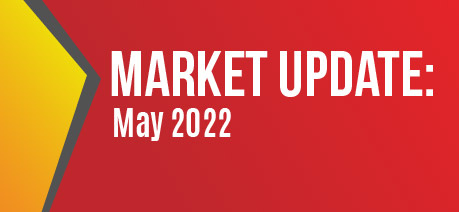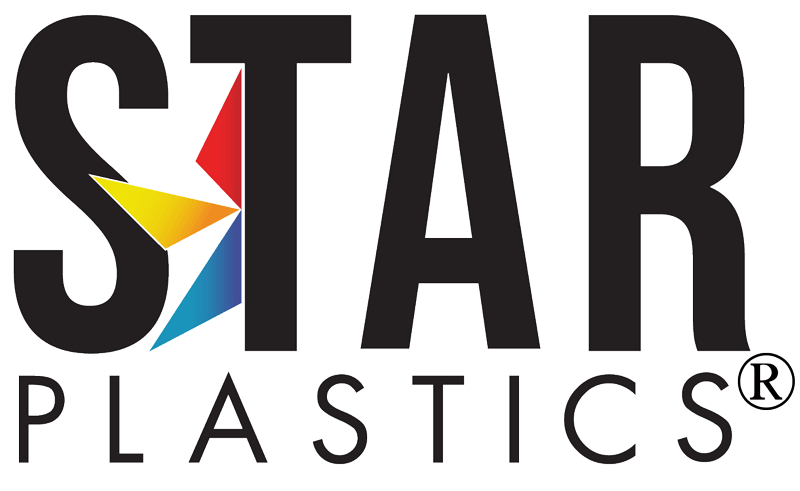News
May 2022 Plastics Monthly Market Update

Demand is looking solid through the end of the year, but at the same time, the economy is slowing down. The back log of orders is what continues to drive demand. Manufacturers must keep producing to fill the pipeline of cars, appliances, electronics and building materials, as well as to begin to create inventory. Regarding global shipping and logistics, challenges are not likely to go away anytime soon relating to labor, COVID-19 outbreaks and port congestion continuing.
ABS
ABS is 27cpp more costly to make in April than forecasted at the beginning of the year. We hear that cost is peaking in May/June time frame, trending down gently through 2022, with 2023 seeing ongoing reductions in price. The amounts are TBD.
Currently, ABS pricing in the market is between $1.70 to $1.75 on the high side for medium-size buyers in truckloads, expecting to be flat in July. Though, the majors would like to have a 4-5 cpp increase at the same time.
The only countries buying Russian oil (except Germany) are China and India, so they are getting lower-than-market feedstock costs. Meanwhile, Europe and North America are hurting on oil costs – which is why we haven’t seen polymer cost reductions along with the reduced lead times.
In China, the lockdown is slowing demand, and the economy is poor at best. Korea and Taiwan are moving ABS to North America at lower prices with the economic slowdown already seen, with inventory they cannot move. Currently, there are 16M lbs/month inbound to NA from Taiwan that had previously been going to China. This is making it tough to pass on the cost increases putting pressure on margins. ABS prices will come down just based on the cost down in freight.
Lead times for imports continue to be 14-16 weeks, Sabic is now down to 8 weeks, and Star is 6 weeks!
PC
For PC, global materials producers Trinseo and Covestro both released Force Majeures for their PC and PC/ABS resins. Covestro’s Baytown site experienced unexpected power and steam outages that impacted their ability to produce BPA and ultimately their PC. This is keeping supply tight, as inventory remains depleted, and replenishment lagging.
Overall, we continue to see the market as a sellers’ market as North America doesn’t import that much PC, so there is less external pressure on the market than there is for ABS. Prices are projected to hold through October with slight reductions by the end of the year, but no major drops. In North America, pricing is running in the $1.60 – $1.70 range for larger volume buyers.
While the polymer cost is flat (but elevated), additives and pigments are still are the volatile factor. FR’s are up 20 cpp centered around organic-based FRs.
In Asia, PC capacity is continuing to increase, with plans to expand the supply by 30% globally next year which will pushing prices down over time. Currently, plants are idled in Asia as the demand is not supporting those plants. Once the lockdown is over in China, Sabic’s Hainan facility and Wanhua will have big start-up capacity, with much of the 30% coming from them.
There is also a new Shell facility in Singapore that is the pilot plant with new technology to make PC at the best cost of production in the market. Once commercialized, they will translate the technology to their production facility in Shanghai. Pricing out of Asia is around $1.54 for large volume and railcar buyers — $2.01 as medium size buyer.
Parallel to ABS, imports are experiencing good demand and similar lead times of 14-16 weeks, and Sabic at 8 weeks. Did we mention Star is at 6 weeks?! Lead times are expected to come down as time moves forward.
Freight & Logistics
Global shipping and logistics challenges are not likely to go away anytime soon. Global port congestion remains an issue, with 12% of global capacity (equivalent of 3 million containers) effectively removed for multiple reasons, including COVID-19 shutdowns and lack of labor.
Two major ports of the US West Coast—Los Angeles and Long Beach, Calif. – are backed up to the point where ships approach the ports, then drift out due to lack of anchoring spots, requiring them to approach again.
Reliability of shipping deliveries currently is between 13-30%, well below the historical average of 65%. Shipping delays globally are averaging between 6 – 15 days, with fuel costs also rising in recent months because of the crisis in Ukraine. Globally, ocean freight rates should come down with the lock down as there isn’t product to move out of Asia to NA.
On the US East Coast, some rail shipments can’t double-stack containers because they need to go through tunnels, reducing the amount of freight that can be shipped. Shipping firms now are charging $15k – $20k per container, compared with the $3k they were getting before the pandemic. Current lead times from China to Chicago—from port to container yard—are about 45 days, which doesn’t include the 4-6 weeks needed to schedule a shipment in advance.
We value your business.
Please don’t forget that we appreciate your business, being a valued partner to Star Plastics and we look forward to working with you well into the future. Please contact us at Sales@StarPlastics.com or your local Star Plastics representative if you have any questions about current market conditions or how this may affect upcoming orders.



